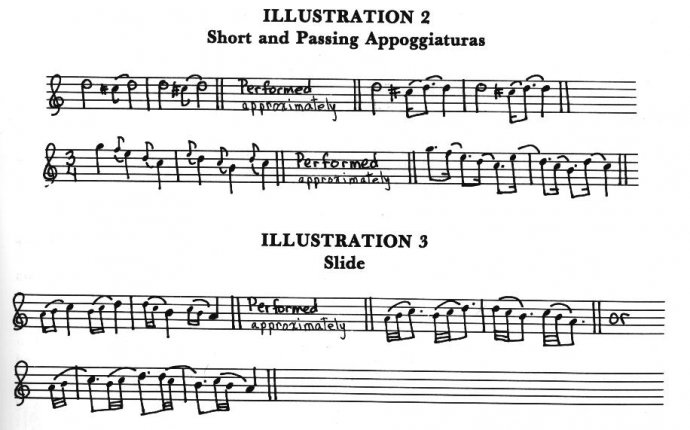
baroque music ornamentation
In the past decade or so, after some hundred and fifty years of neglect, ornamentation of Baroque music has again become widely accepted. Whereas, in the early 1960's most conductors would hit the ceiling every time we added so much as a cadence trill in a Bach suite or a Handel oratorio, now they are usually delighted when players embellish, even quite elaborately. These days students coming to play auditions have also usually done their own ornamentations of Baroque works. So, I believe, virtually all oboists recognize the necessity of ornamentation and want to do their own. The problem is how to get started, and how to create ornamentation that is stylistic, personal and for lack of a better word, beautiful.
To begin with, I think it is very important to realize that the addition of the maximum number of notes is of no value at all. Rather the essential thing is to reinforce the mood of an individual movement or composition. During the Baroque era, composers and performers both felt themselves to be partners in serving a higher purpose than just entertaining their audience. They wanted to deeply move and "instruct" the listeners through the conveying of various feels (or affects as they were known then) such as love, sadness, joy or piety. The composer felt that just as the performer knew how to choose the best dynamics, articulations, nuances of tone color and exact tempi to effectively present his composition (and therefore rarely, if ever, marked these details), so he would also be able to embellish the various melodic lines to give them maximum life and beauty. Ornamentation was simply considered one aspect of the expression of the music, which was the performer's province. The composer was not worried about these embellishments being in the correct style since there was at that time a common musical language. The dichotomy that arose later between the composer and the performer did not exist then. All the Baroque composers were fine players-some outstanding virtuosi-and many well-known performers composed. One should, therefore, try in his ornamentation, as in all other aspects of his interpretation, to effectively communicate the sense of the music. In a lyrical movement, intensify the expressiveness through the use of smooth melodic ornaments and appoggiaturas, in a brilliant movement, incorporate virtuosic ornaments such as fast trills and runs, and in a movement that seems complete, add almost nothing besides essential cadential trills.









